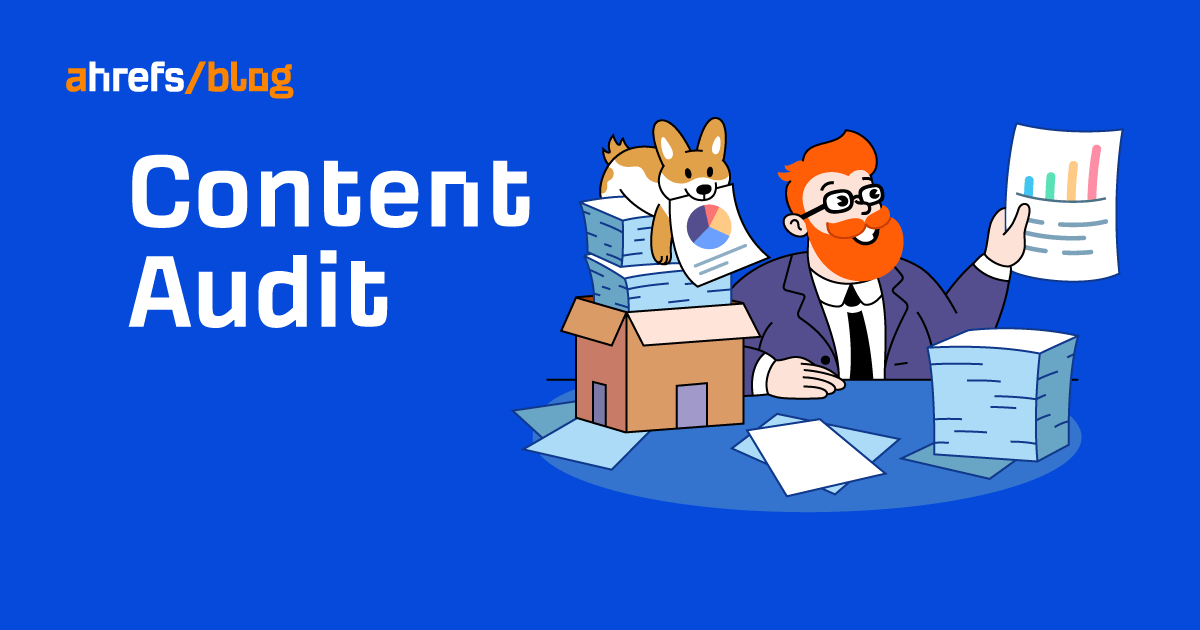Most of us are so focused on publishing new content that we neglect the content we already have.
This is a mistake because not everything you publish will be a home run out of the park. Sometimes, it’ll fail to rank on Google, or convert, or contribute to your business goals in any meaningful way.
When this happens, you shouldn’t just leave the page to die a slow, painful death. You should revisit it, figure out what went wrong, and take action to improve its performance.
However, before you can do that, you need to find your underperforming pages—which is where a content audit comes in.
In this guide, you’ll learn the following:
A content audit is where you analyze the performance of your content to find opportunities for improvement. Many content audits focus on SEO performance, but a full audit also takes into account the content’s business performance and utility.
A content audit is important for understanding what you need to do to improve your site’s performance. It helps you to identify pages that aren’t performing well, why they aren’t, and how to fix that.
If you’re purely looking to improve your site’s organic search performance, follow this simple SEO content audit process:
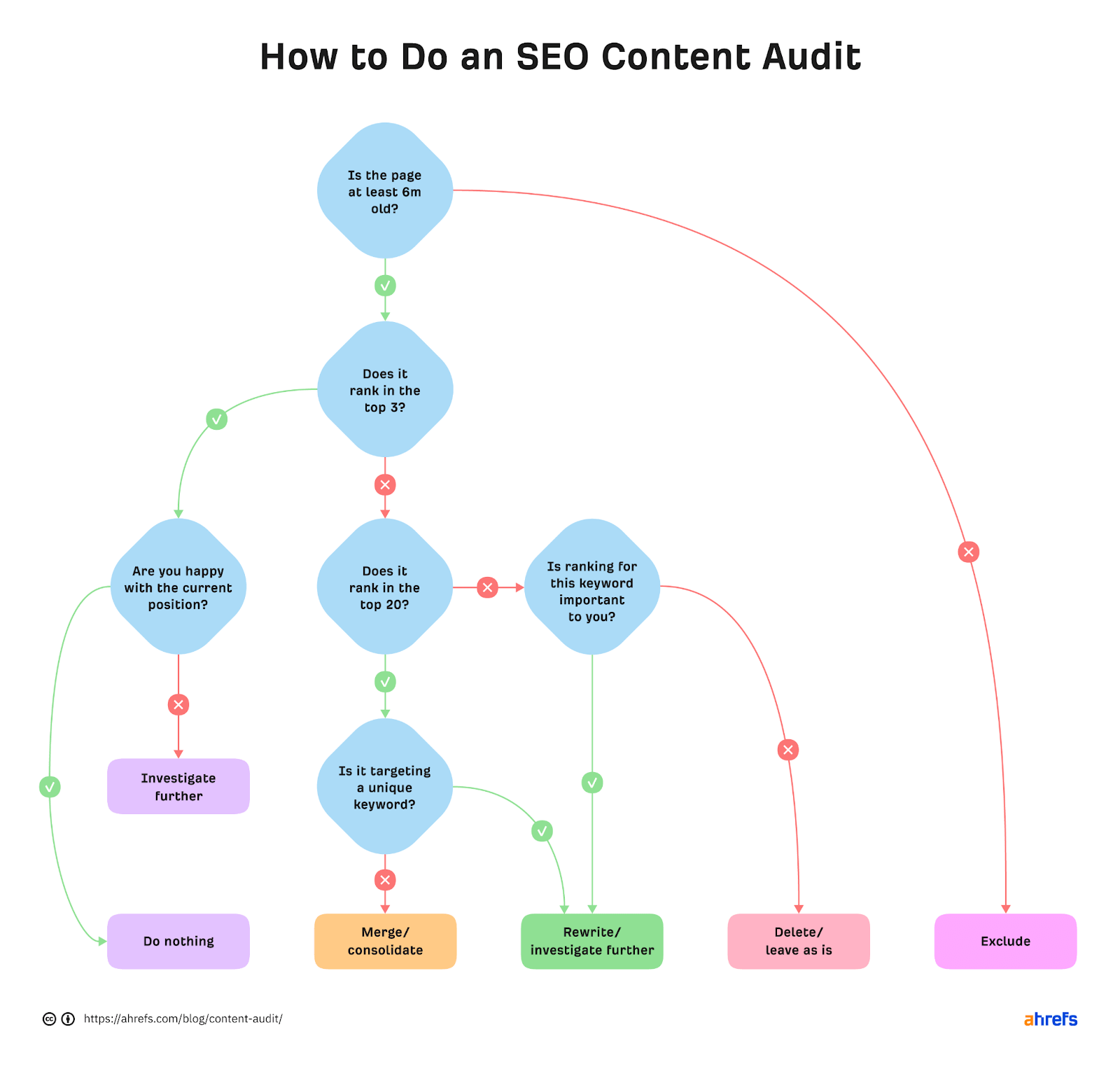
IMPORTANT
Here are two things to keep in mind when following this process:
- You should only use it for pages intended to rank in organic search – In other words, don’t use this for “About” pages and the like. It doesn’t matter whether those pages rank on Google because that’s not their purpose.
- You should take the recommendations with a pinch of salt – Don’t blindly follow the recommendations without manually double-checking that they make sense. Things aren’t always so black and white, and you may need to check a couple of other things manually before confidently executing the action. I’ll discuss a few common “it depends” scenarios below.
This process is based closely on the way our free SEO WordPress plugin works, which pretty much automates the entire content audit process and kicks back recommendations.
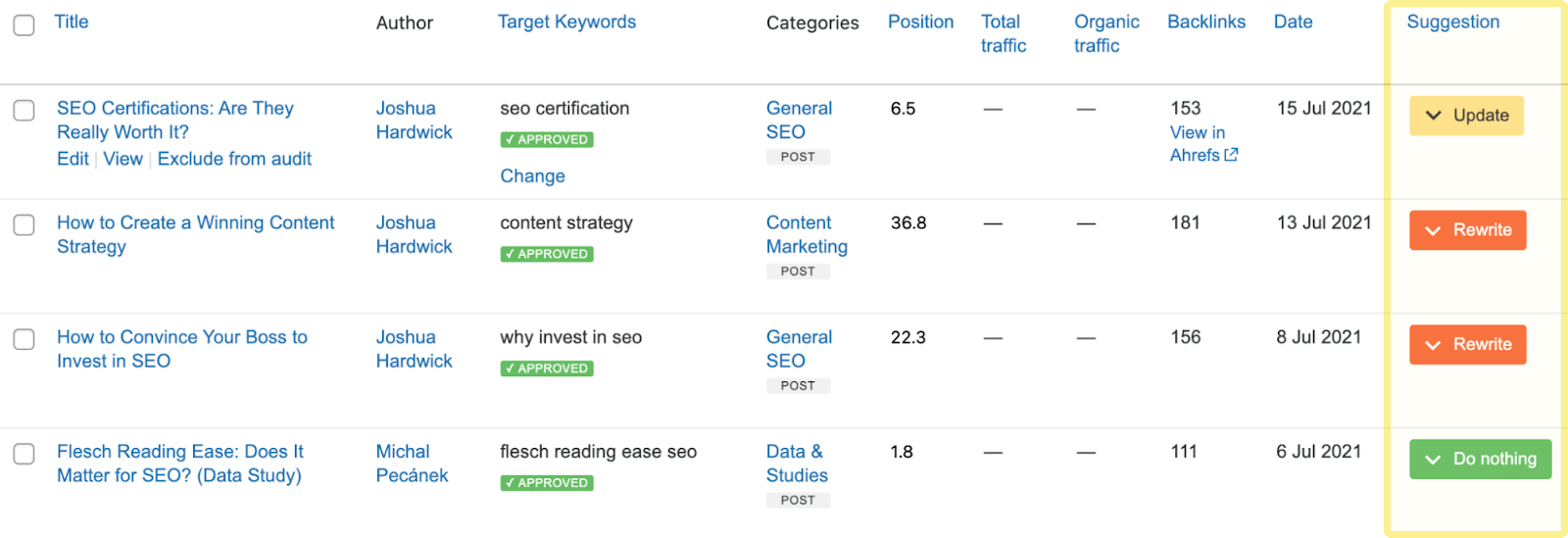
Example of post-audit recommendations in our free SEO WordPress plugin.
For that reason, if your site runs on WordPress and you don’t want to know every last detail of how the process works, it’s probably quicker to use the plugin. (We have resources to help you learn how to install and use it.)
But if you’re doing this manually, keep reading as we go through how to answer the questions in the content audit process and what actions to take in each scenario.
Let’s start at the top.
1. Is the page more than 6 months old?
If the answer to this question is no, then the page shouldn’t be audited. This is because it takes time to rank on Google, so it’s not a great idea to make changes to recently published content until it has had time to rank.
For example, we won’t bother auditing this blog post today. This is because it was only published in January:

That said, the six-month period isn’t set in stone. If you think three months is enough time for a page to rank or simply prefer to leave pages for 12 months before auditing them, feel free to adjust this number.
2. Does it rank in the top three?
If the page is more than 6 months old, the next question is whether it currently ranks in the top three for its primary target keyword. You can find this information in Ahrefs’ Site Explorer (get access for free with an Ahrefs Webmaster Tools account).
Here’s how:
- Paste your webpage URL into Site Explorer
- Go to the Organic keywords report
- Check your primary target’s ranking position
For example, if we do this for our SEO checklist, you can see that it ranks in position #3:

If your page ranks in the top three and you’re happy with that position, there’s no need to take any action. However, if you want to pursue the top spot, you’ll want to investigate the SERP further to see whether that’s even likely to be possible. And if so, what you’ll need to do to get there.
Learn how to do that in our guide to ranking higher on Google.
3. Does it rank in the top 20?
If your page doesn’t currently rank in the top three, use the Organic keywords report to see if it’s at least in the top 20.
If it is, check to see whether the page is targeting a unique keyword.
The easiest way is to run a site: search for your website and target keyword, then eyeball the results for other pages seemingly targeting the same keyword.
For example, if we run a site: search for moz.com + keyword cannibalization, Moz appears to have multiple pages targeting this keyword:
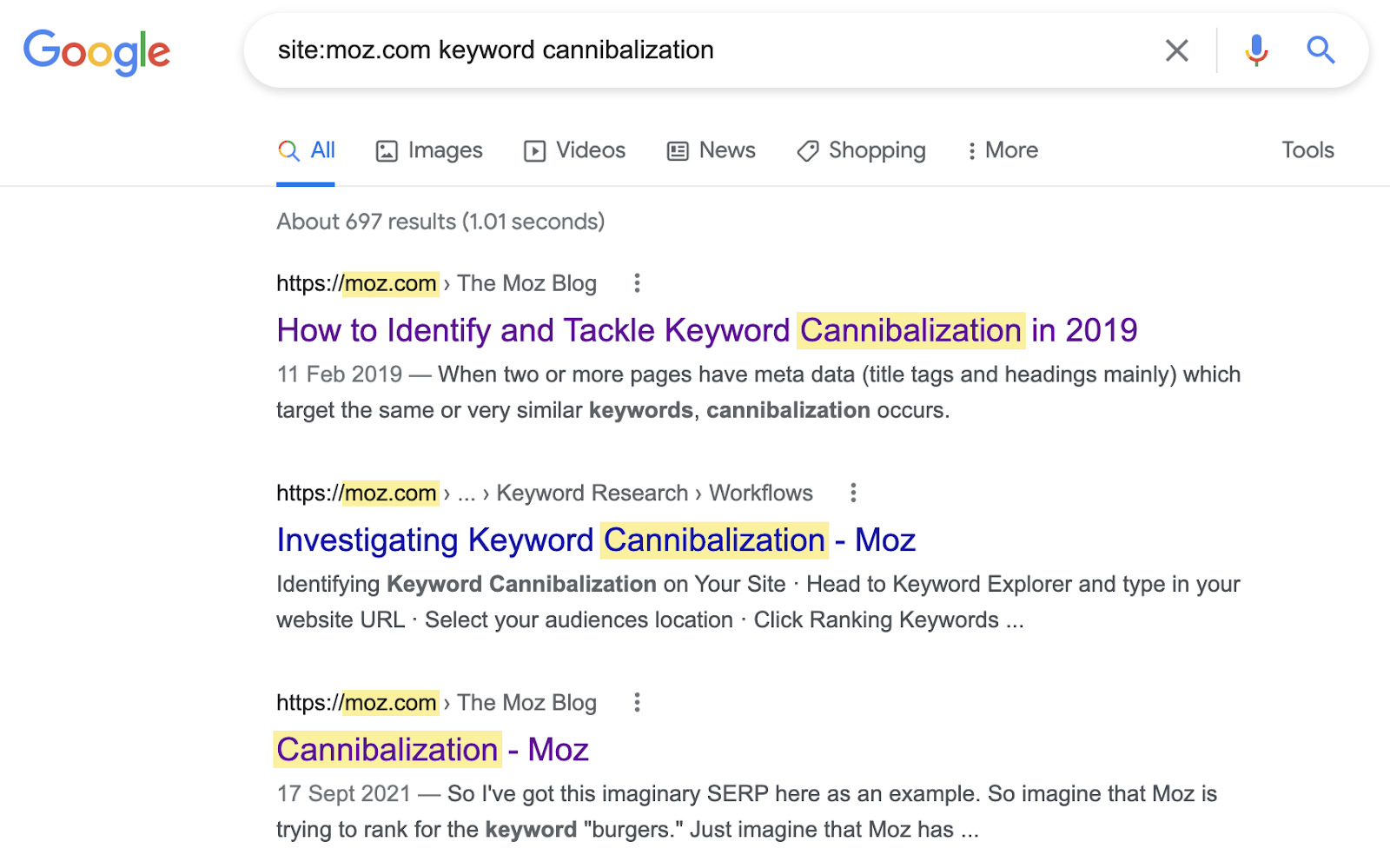
In this case, it probably makes the most sense to merge these posts into one—then use 301 redirects to consolidate the link equity.
However, if the page is targeting a unique keyword, the best course of action is probably to update it. After all, the page is ranking in the top 20, so it’s showing some signs of life. You may be able to crack the top 10 by adding updates to ensure that:
- It’s a good match for search intent.
- Its basic on-page SEO is on point (title tag, H1, etc.).
- It covers the topic fully.
IMPORTANT
Low rankings aren’t always a content problem. You may simply not have enough backlinks to compete in the SERP. You can get a rough sense of how your link profile stacks up against the competition by plugging your keyword into Ahrefs’ Keywords Explorer and checking the Domains column for the competition.

You can then see how those numbers compare to your page by plugging it into Ahrefs’ Site Explorer.

In our case, it doesn’t look like we’re lacking backlinks, as the number of referring domains pointing to our page is roughly on par with our competitors’.
If you’re an Ahrefs user, you can use Site Explorer to find important subtopics you may have missed. Just plug your page in it, go to the Content Gap report, paste in the URLs of a few top-ranking posts for your keyword, then hit “Show keywords.” You’ll see all the keywords these pages rank for that your page doesn’t.
For example, if we do this for our guest blogging guide, you’ll see that some of the top-ranking pages are ranking for “what is guest blogging”:

We don’t rank for this keyword because we didn’t include a definition on our page, so we’ll probably want to add this during the update to make our page more comprehensive.
4. Is ranking for this keyword important to you?
If your page isn’t ranking in the top 20 for its target keyword, it’s probably going to take a lot of time and effort to crack the first page. After all, it’s usually harder to boost a page by 20+ positions than it is by just one or two.
For that reason, you need to decide whether the effort is really worth the reward—and that means asking yourself how important ranking for this keyword is for your business.
If the keyword is not particularly important…
Plug the page into Google Search Console to see if it’s attracting any organic traffic.
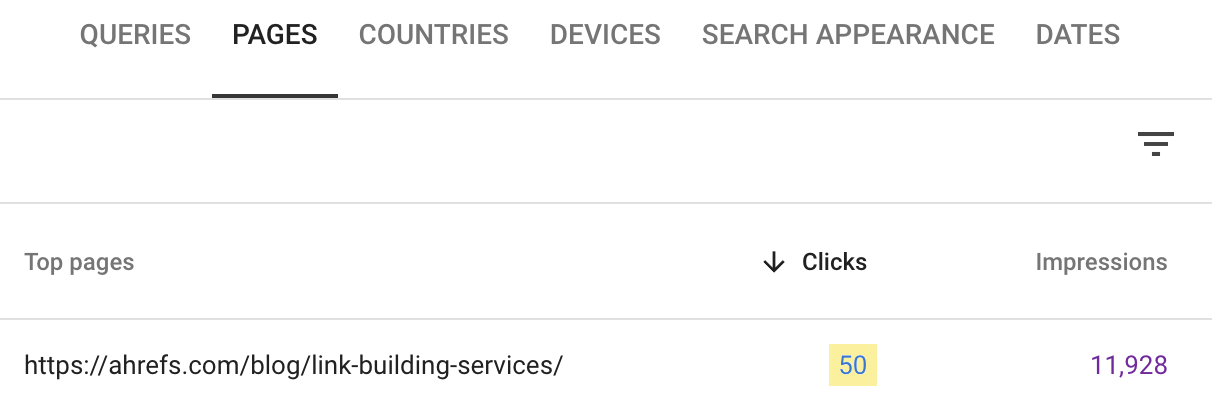
If it is attracting organic traffic and you want to keep it, leave the page as is and exclude it from future content audits.
If it isn’t attracting organic traffic, follow this process:

Note that if you’re redirecting the page, you should redirect it to a similar page (e.g., /link-building-tactics/ → /link-building/).
TIP
It’s also best practice to update internal links after you delete a page. Here’s how to find these links using Ahrefs’ Site Audit (you can use this for free with an Ahrefs Webmaster Tools account):
- Crawl your site
- Go to the Link Explorer tool
- Enter the URL of the page you just deleted in the search box
- Set the dropdown to “Target URL”
You’ll then see the locations of all internal links to that page:
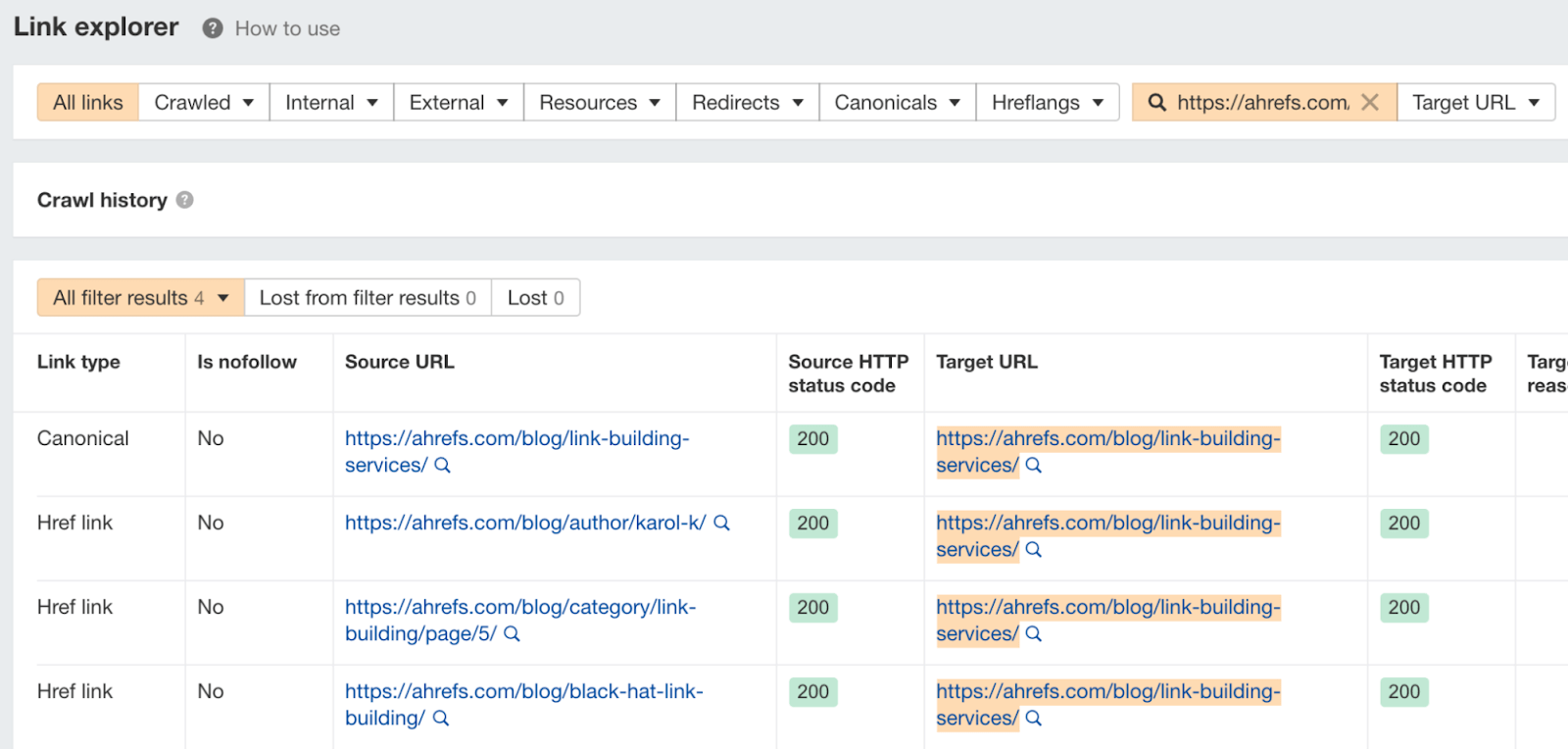
If the keyword is important…
You need to figure out why the page is not ranking and take action. Often, this will come down to grossly mismatched search intent—at least in part. If that’s the case, you’ll probably have to go back to the drawing board and rewrite the content from scratch.
However, there could be other reasons the page isn’t ranking, such as a lack of backlinks, a SERP dominated by well-known competitors, or something else entirely. For that reason, if you’re not sure why it isn’t ranking, check out our step-by-step guide to ranking higher on Google.
If you’re looking for a more robust, SEO-first content audit that also takes things like conversions into account, Patrick Stox has you covered:
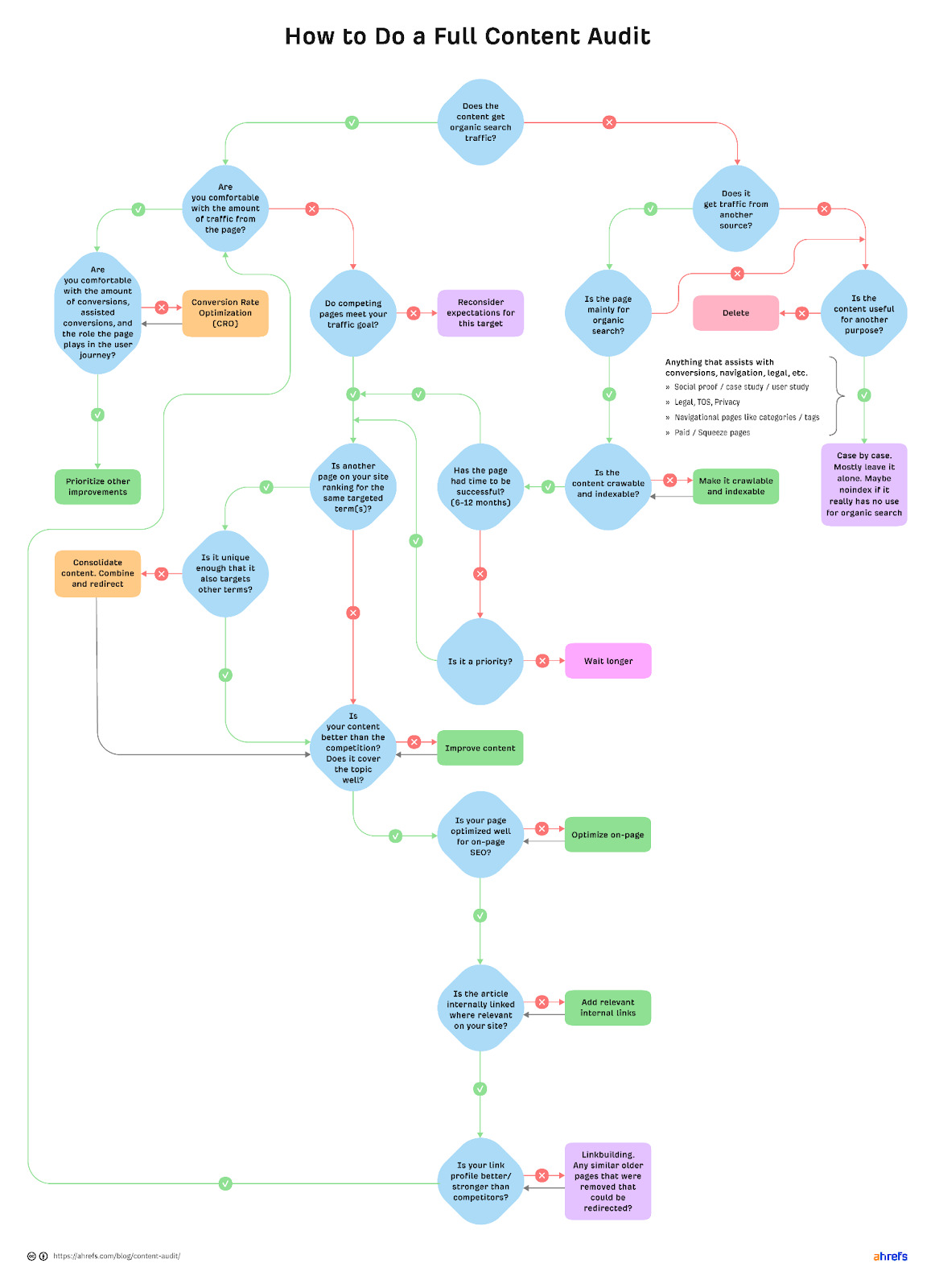
You can see this is a more intensive process that’s pretty much impossible to fully automate, so it’s certainly more of a workflow for hardcore marketers.
Here are a few tools and resources to help with answering the questions:
Final thoughts
Content audits should be done regularly. They reveal how to improve your website’s performance (SEO and otherwise) and help you achieve your business objectives.
Just remember that although automation can help with the content audit process, common sense and manual checks are still important. Never delete or redirect content unless you’re confident that it’s the best course of action. And if you’re unsure, hire an SEO or marketing professional to do the content audit for you.
Got questions? Ping me on Twitter.
